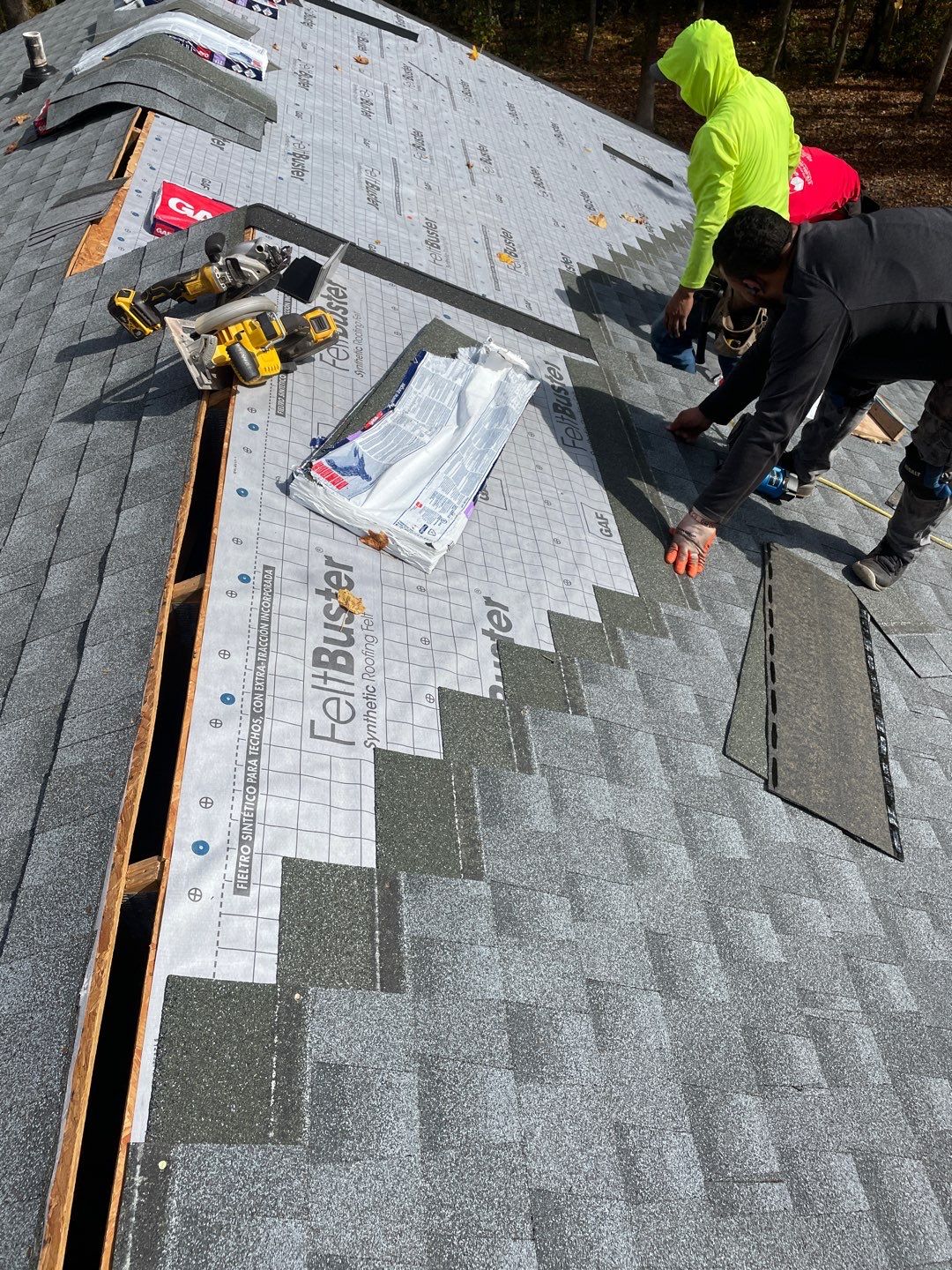Finest Practices for Ensuring Appropriate Roofing Air Flow
Guaranteeing proper roof air flow is important for the durability and efficiency of a roof system. A balanced consumption and exhaust air vent proportion, typically 1:300, plays a crucial role, with consumption vents ideally positioned at the reduced edge of the roofing system for amazing air access and exhaust vents at the optimal for warm air leave. Routine inspections to identify blockages and keep clear air flow are critical. Furthermore, maintaining insulation away from vents is vital to avoid air flow restriction. Understanding these foundational elements sets the phase for more thorough understandings right into installation and upkeep techniques that can substantially enhance your roof system's efficiency.
Understand Ventilation Essentials
Appropriately recognizing ventilation fundamentals is important for ensuring the longevity and effectiveness of roof. Reliable air flow mitigates dampness buildup and temperature extremes in the attic, both of which can lead to significant architectural damage gradually. A well-ventilated roof covering helps in protecting against common concerns such as mold growth, wood rot, and ice dams, which can compromise the honesty of the roof covering materials and the underlying frameworks.
The key objective of air flow is to help with the motion of air, permitting a regular exchange in between the outside and indoor environments. This equilibrium is attained via a mix of intake and exhaust vents that work together to keep ideal airflow. Intake vents, typically situated along the soffits or eaves, permit fresh air to enter the attic room area, while exhaust vents, frequently situated at or near the roof covering ridge, allow warm, damp air to leave.
Trick variables affecting the performance of roofing system ventilation consist of proper placement, adequate sizing, and guaranteeing that both consumption and exhaust vents are unobstructed. Routine evaluation and maintenance are important to recognize prospective obstructions, damage, or ineffectiveness in the ventilation system, thus guarding the roofing's performance and toughness.
Types of Roof Covering Vents
Roof covering vents play an important role in preserving effective attic ventilation and, by expansion, the total health and wellness of the roof. Various sorts of roof covering vents are readily available, each with unique advantages tailored to particular roofing demands. Ridge vents, for instance, are mounted along the roofing system's optimal, allowing cozy, humid air to run away from the attic room. They offer constant air flow and mix flawlessly with the roofline, making them both reliable and visually pleasing.

Soffit vents are mounted under the eaves and operate in tandem with roof vents to guarantee a well balanced intake and exhaust system. By allowing cooler air to get in from below, soffit vents assist in the expulsion of warm air via top vents. Gable vents, situated on the exterior walls of the attic, offer an additional effective solution, especially in homes with saddleback roofs.
Assess Your Current Air Flow

Following, consider the age and problem of your roofing products and air flow components. Older systems may not abide by present building regulations or may have degraded with time, reducing their effectiveness. Conduct a detailed evaluation to recognize any indicators of damage, such as rust, damage, or voids that could endanger the system's efficiency.
Furthermore, gauge the attic room temperature and moisture levels. High temperatures and humidity can suggest insufficient air flow.
Installment Best Practices
Effective installation of roofing ventilation systems is paramount for making certain optimum efficiency and long life. Correct setup starts with comprehending the specific ventilation demands of the building and the roof it covers. This entails computing the right ratio of intake to tire vents, usually sticking to the 1:300 policy, which specifies one square foot of air flow for each 300 square feet of attic room floor space.

The positioning of vents is just as essential. Intake vents need to be set up at YOURURL.com the roof covering's lower side, commonly in the soffits, to allow cool air to go into. Exhaust vents, on the various other hand, should be set up near or at the roofing's height to promote the exit of cozy, wet air. This develops an all-natural airflow that helps keep temperature level and dampness balance within the attic space.
Seal all air vent connections carefully to avoid air leakages and potential water seepage. Usage high-quality materials and comply with producer standards to ensure sturdiness and efficiency. Additionally, incorporating ridge vents with baffles can dramatically boost airflow efficiency by preventing wind-driven rainfall and snow from getting in the attic.
Inevitably, precise installment of roof covering ventilation systems reduces potential issues such as mold and mildew development, ice dams, and architectural damage, making certain the roof's integrity and the structure's overall health and wellness.
Regular Upkeep Tips
Uniformity in upkeep techniques is fundamental to ensuring the long-term effectiveness of roofing air flow systems. During these examinations, ensure that vents are free of debris, nests, and other blockages that could hamper airflow.
Cleansing the vents is another essential task. Use a soft brush or a vacuum to remove dust and particles from intake and exhaust vents. Be careful not to damage the air vent displays or louvers throughout the process. In addition, inspect the attic room for any kind of signs of water damage, which could compromise the honesty of the roof.
Appropriate insulation is similarly crucial. Guarantee that attic room insulation does not block the vents, as find out here this can significantly restrict air movement. Reposition or change it to maintain an effective obstacle. if any kind of insulation has shifted or settled.
Finally, change any kind of harmed or missing out on parts immediately. Damaged vents, split tiles, or worn-out blinking can all add to inadequate air flow and must be addressed right away. Regular upkeep ensures that the roof covering air flow system operates optimally, thereby prolonging the life expectancy of the roof covering itself.
Conclusion
Making certain proper roof ventilation is extremely important for preserving the performance and sturdiness of a roof her response system. Adherence to the 1:300 consumption and exhaust air vent proportion, combined with the tactical placement of vents, is necessary. Routine biannual assessments, debris cleansing, and guaranteeing insulation does not obstruct air flow are critical methods. Carrying out these ideal methods will foster a well-ventilated roof, thus minimizing potential issues associated with moisture build-up and too much warmth, eventually lengthening the roof covering's lifespan.
A well balanced consumption and exhaust vent ratio, typically 1:300, plays a critical duty, with intake vents ideally put at the lower edge of the roofing system for awesome air access and exhaust vents at the optimal for warm air leave. Intake vents, generally situated along the soffits or eaves, allow fresh air to go into the attic area, while exhaust vents, usually positioned at or near the roof covering ridge, make it possible for warm, damp air to leave.
Soffit vents are installed under the eaves and job in tandem with roofing vents to make sure a well balanced consumption and exhaust system. By permitting cooler air to get in from below, soffit vents help with the expulsion of warm air through upper vents. Adherence to the 1:300 intake and exhaust vent proportion, coupled with the tactical positioning of vents, is crucial.